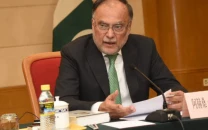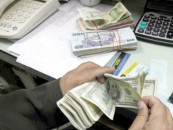Growing fiscal deficit
The budget deficit in the first three months of the current fiscal year stands at Rs541.7 billion

Finance Minister Asad Umar had unveiled a mini-budget in September with claims that it would result in a steep fiscal adjustment of 2% of GDP and help bring down the overall deficit to 5.1%. To the contrary, there has been a more than Rs100 billion rise in budget deficit — and that too despite a cut in development budget, of Rs250 billion for the full fiscal, as well as Rs246.6 billion receipts in provincial surpluses. Proceeding at this pace, the deficit could go well beyond 5.6% of GDP at the end of ongoing fiscal year.
The double-digit growth of the current expenditure — which refers to short-term spending like on wages, salaries, cost of raw materials and administrative measures — also highlights the problematic areas of the fiscal framework given that the rise in tax revenue is not even half as much. The current expenditure in the July-September quarter stands at Rs1.48 trillion as compared to Rs1.24 trillion in the same period last year, marking an increase of about 20%. By contrast, the FBR tax collection remains at Rs832.2 billion in the first quarter of the ongoing fiscal year, growing only by 8.7% when compared with the figures in the corresponding period last year.
The government has already done too much of fiscal tightening by way of cutting spending and imposing taxes, but the fiscal deficit crisis persists. While the government cannot go any harsher morally, the ways to enhance economic growth — the least painful way to cut the deficit — are few and far between. So tougher days ahead, both for the rulers and the ruled.
Published in The Express Tribune, November 25th, 2018.
Like Opinion & Editorial on Facebook, follow @ETOpEd on Twitter to receive all updates on all our daily pieces.














COMMENTS
Comments are moderated and generally will be posted if they are on-topic and not abusive.
For more information, please see our Comments FAQ